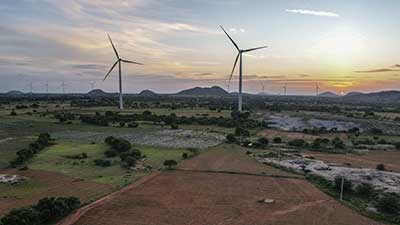Date: 04/04/2023
Relevance: GS-3: Economic development, Environment and Biodiversity.
Key Phrases: production-linked incentive, supportive ecosystem, clean energy, conducive environment, stable and transparent policy,
Context:
- The world is currently witnessing an unprecedented push towards clean energy.
- Governments across the globe are striving to reduce their carbon footprint and meet their net-zero carbon emissions targets.
- India too is making significant strides in this direction, and the government has introduced several schemes to incentivise investment in clean energy.
- One such scheme is the production-linked incentive (PLI) scheme, introduced by Prime Minister in 2020.
Production-Linked Incentive
- The PLI scheme is a performance-based incentive program that offers financial incentives to companies that meet specific production targets.
- Under this scheme, companies that manufacture products domestically are eligible to receive incentives ranging from 4% to 6% of their incremental sales over the base year.
- The purpose of this scheme was to promote domestic manufacturing and reduce dependence on imports while creating employment opportunities.
- The scheme has a total allocation of Rs. 1.97 lakh crore over the next five years and is expected to boost domestic manufacturing and exports.
Key learnings that India can take from its experience with its fossil fuel energy system:
- Raw materials alone are not enough :
- India must create the right ecosystem for the conversion of raw materials into commercially useful products:
- India has learned that having raw materials alone is not enough.
- The surrounding economic, technical, and operating ecosystem must enable the conversion of these raw materials into commercially useful products.
- India has the raw material of oil and gas, but it lacks the enabling conditions to monetize them.
- Similarly, the availability of technical talent and capital alone cannot create a world-class hub for the manufacture of batteries, solar cells, wafers, and modules.
- India must create a conducive environment that minimizes the avoidable costs associated with procedural red tape, land acquisition, erratic supplies of water and power, and legal redress. The same principle applies to the clean energy sector.
- India needs to create a supportive ecosystem that encourages investment in minerals, components, and equipment required for the generation and consumption of clean energy.
- Efficient utilization of technology is essential for manufacturing
competitiveness:
- China's dominance of the clean energy value chain is due to its process engineers perfecting the implementation of the several technological steps required to convert raw materials into end products.
- India's engineers will have to achieve similar levels of implementation efficiency.
- The application of cutting-edge technologies, such as automation, machine learning, and robotics, is vital to drive efficiency and manufacturing competitiveness.
- Hence, India should focus on enhancing its technological capabilities to produce clean energy components at competitive prices.
- Small incentives alone may not attract international investor
interest:
- India cannot compete on the size of the incentive package.
- Instead, India needs to lower entry barriers, ease business conditions, and remove the perception that India offers a high-cost operating environment.
- The government should provide a stable and transparent policy framework that supports private investment and encourages a conducive business environment.
- Such a favorable environment will attract international investors to India's clean energy sector.
- Self-reliance does not have to be built on the bedrock of
self-sufficiency:
- India should desist from building a high-cost, domestic, clean energy hub that is forever dependent on subsidies.
- Instead, India should continue with its two-track policy of strengthening its trading relationship with China while competing with it in the clean energy sector.
- India and China can collaborate in the clean energy sector to meet their net-zero carbon obligations and reduce their carbon footprint.
- By collaborating, both countries can achieve scale and lower costs for the development and deployment of clean energy technologies.
Conclusion:
- India's transition to a self-reliant clean energy system can learn a lot from its four-decade-long experience with its fossil fuel energy system.
- The country should focus on creating the right ecosystem for the conversion of raw materials into commercially useful products, efficiently utilising technology, lowering entry barriers, easing business conditions, and strengthening its trading relationship with China.
- India and China can collaborate in the clean energy sector to meet their net-zero carbon obligations and reduce their carbon footprint.
Source: The Indian Express
Mains Question:
Q. Discuss the production-linked incentive (PLI) scheme and its role in incentivizing investment in clean energy. How can India learn from its experience with its fossil fuel energy system to transition to a self-reliant clean energy system? (250 Words).






















